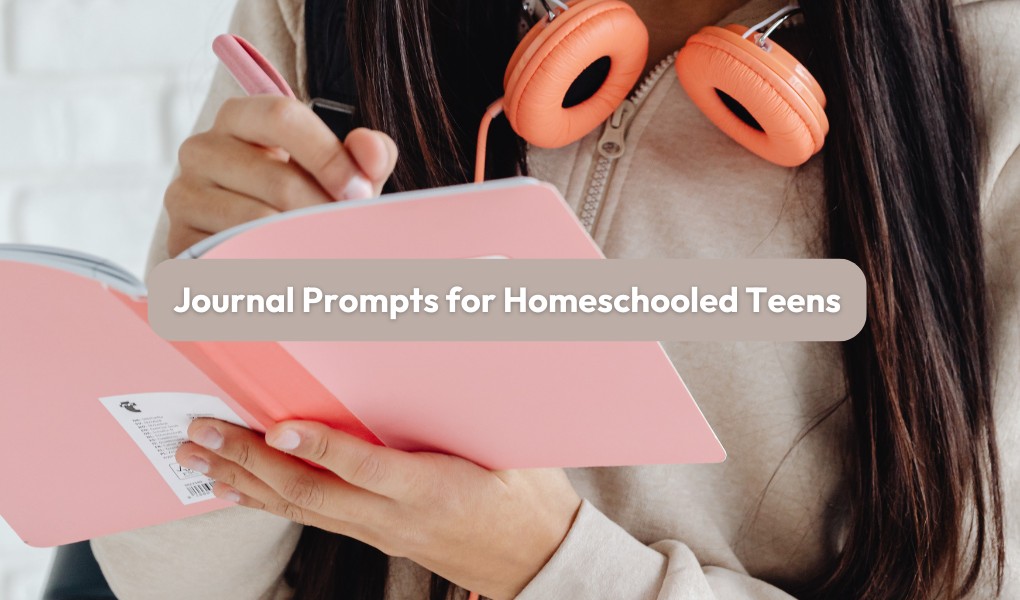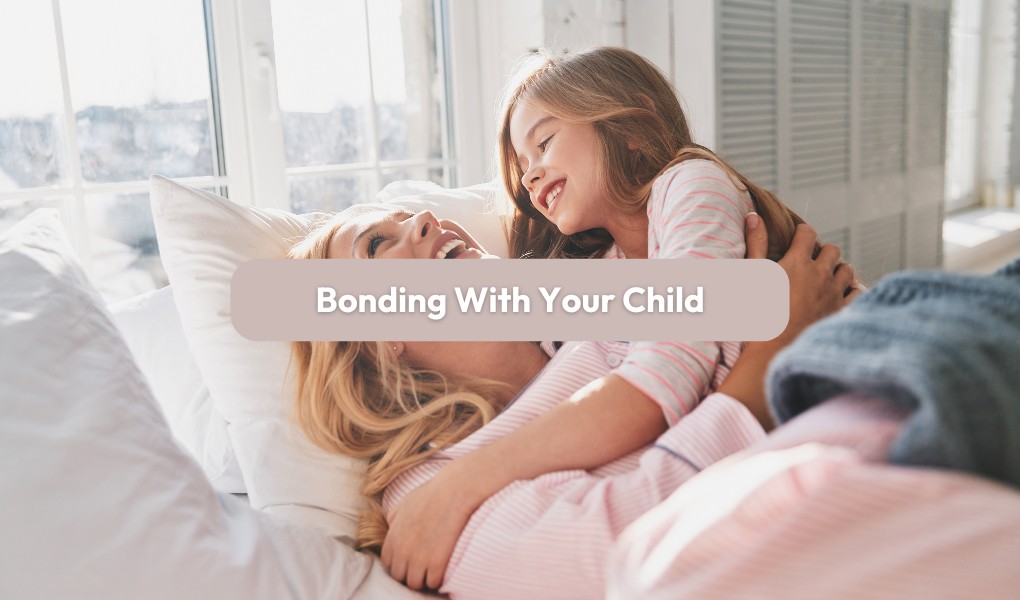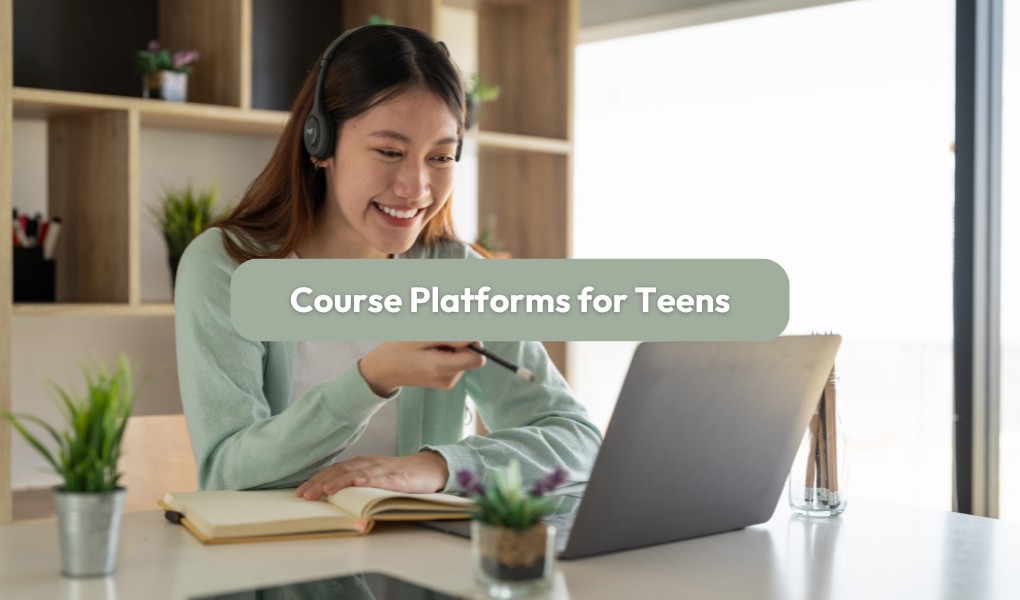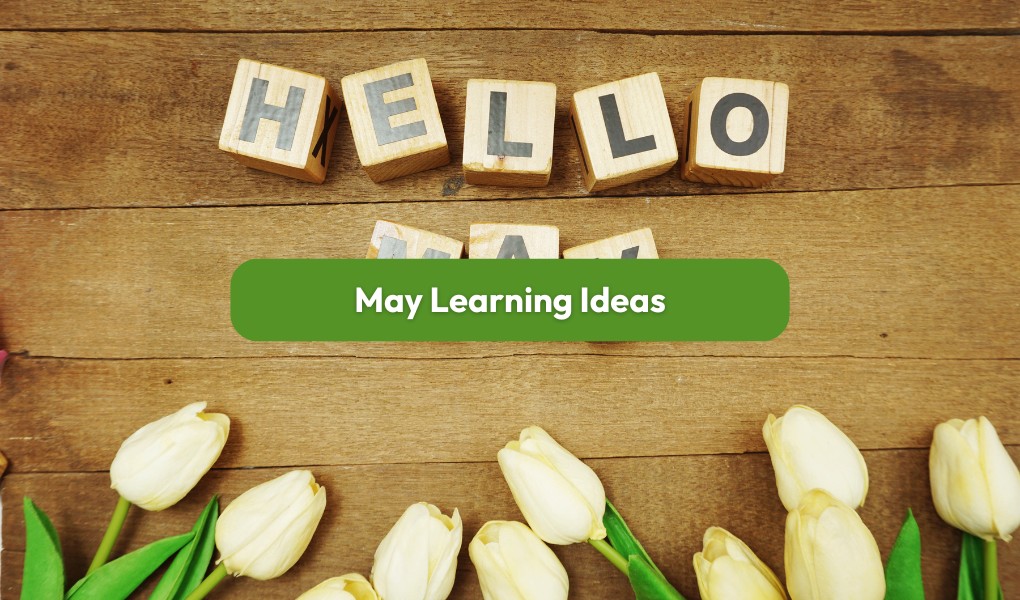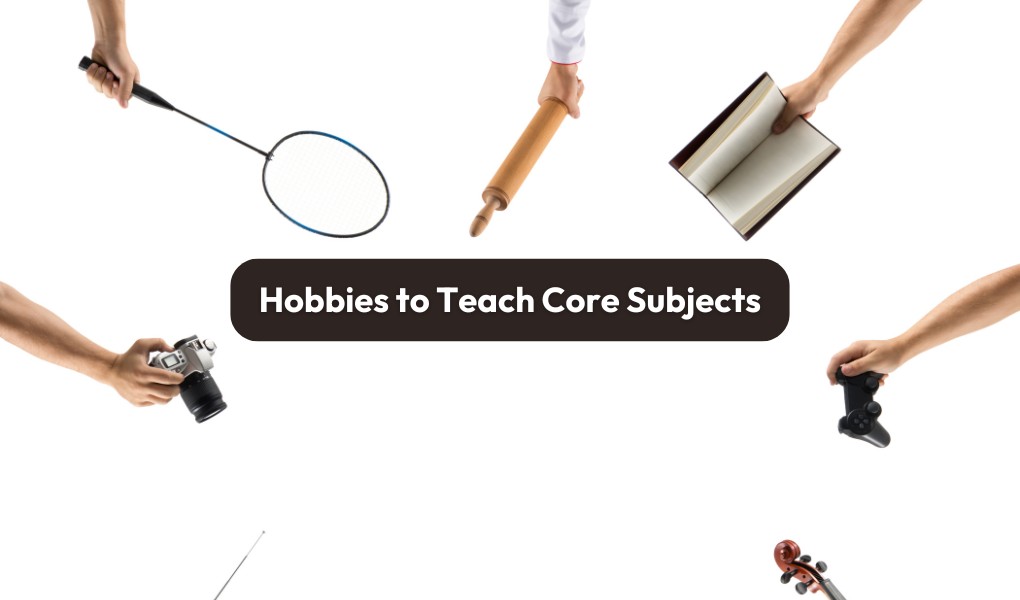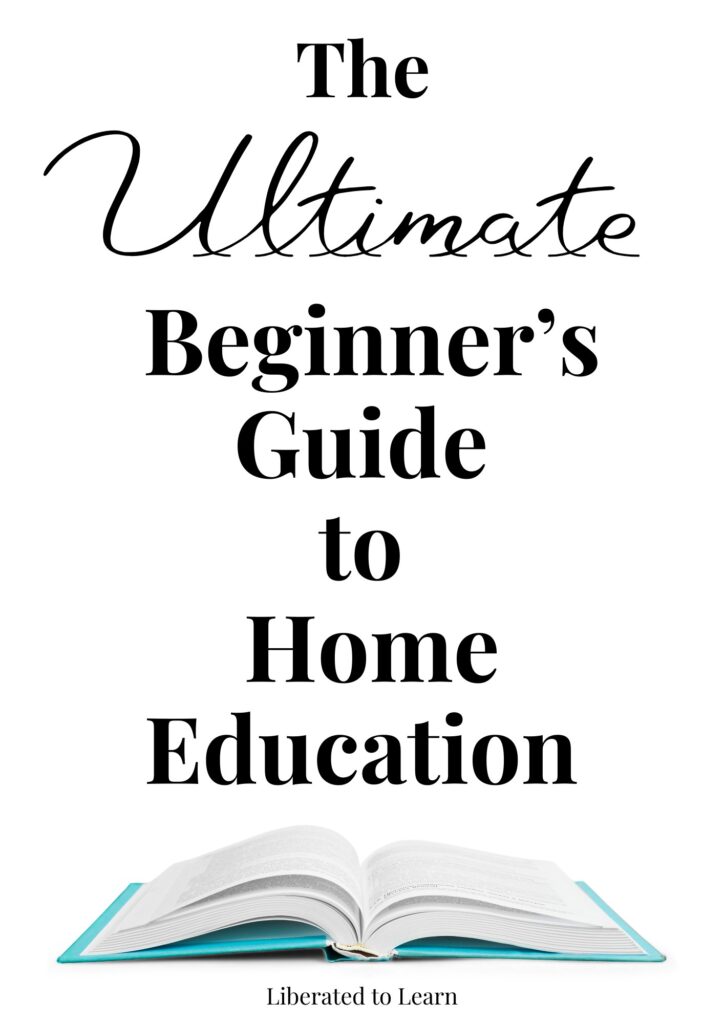You may be thinking, how many styles of home education are there? And while you’ve probably heard of a few, there might be some that are completely new to you.
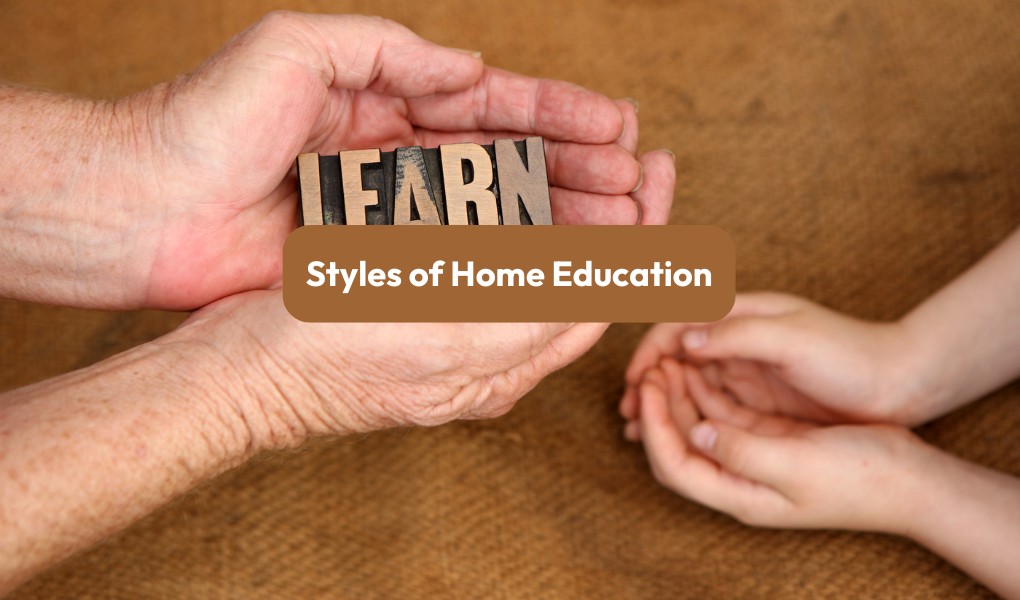
Contents
When you first start home educating, the number of learning styles to choose from can be quite overwhelming. After all, how do you know which style will be right for your child? From personal experience, it took me a while to work out which style of home education suited my daughter best, but I think that’s because I started home educating her from the outset at a young age.
Now, you may be thinking, how many styles of home education are there? And while you’ve probably heard of a few, there might be some that are completely new to you. Just like every child is unique, every learning style is unique too.
This post is going to dive into the various styles of home education and help you find the one (or two) that will be right for your child.

Learning Styles of Home Education
Homeschooling
Homeschooling (also known as traditional homeschooling) is what many people confuse home educating for, but they are in fact different. If you hear the term ‘homeschooling’, it is exactly what it implies: school at home. When someone chooses to homeschool, they’re more than likely replicating school and the methods of traditional education, such as using organised timetables and planned curriculums.
Many people may naturally fall into homeschooling, especially if their child was previously in school, because it’s a style of learning that people are the most familiar with. Homeschooling is ideal for families who thrive on structure and for children who learn well using textbooks and enjoy following a curriculum. You as the parent essentially become the teacher, although you can also use tutors if you don’t feel that confident.
With homeschooling, you can create a designated learning space within your own home, known as a homeschool room, and the structure and routine is all in your control. If you’re someone who’s worried about getting home education right or if you’re not sure where to start, homeschooling might be a good learning style to start with.
What it involves:
- Structured, more formal learning
- The use of curriculums, worksheets and textbooks
- A schedule that likely resembles school
- A dedicated learning space
- Academic tests for progress
Will suit families who:
- Like structure and routine
- Want to replicate school at home
- Prefer formal learning
- Want to take exams in the future
Unschooling
If you’re looking for a more child-led approach to education, then look no further than unschooling. It is the queen of learning styles when it comes to letting children navigate their own home education journey as they are guided by their own interests and ideas.
Unlike with homeschooling, where parents take on the role of teacher, unschooling parents are merely facilitators. They put things in place, like resources and opportunities, to encourage their children’s curiosity. And children learn from natural experiences because they are natural learners.
A reason why people tend to choose unschooling as a learning style is because it’s also a way of ‘unlearning’ everything about school and its principles. Unschooling is a much more informal method and doesn’t impose schedules, tests or grades on children. Families may still include some form of structure, but it is much more flexible.
What it involves:
- Natural learning
- Unlearning traditional schooling methods
- Following your child’s interests
- Flexible learning approaches and schedules
Will suit families who:
- Want to give their children more autonomy over their learning
- Favour flexibility
- Want their children to learn at their own pace
Deschooling
Deschooling isn’t necessarily a learning style, but it’s worth including on this list for a number of reasons. Whilst it’s more of a transitional phase from traditional education to home education, deschooling is often a step that many families miss out after deregistering their child from school.
Instead of having a period of time to adjust, some families often dive straight into a learning style of home education and may find themselves feeling overwhelmed. So, here’s why it’s worth deschooling:
- It gives children a chance to adjust to home education.
- Children are able to decompress from the stresses of school.
- It prevents parents from replicating school at home right away.
- It gives families a chance to try out different learning styles.
If you want to know more about deschooling and how to deschool successfully, check out our post, which includes 23 deschooling tips!
Montessori
Montessori is another style of home education which encourages ‘natural’ learning through a child’s desire to learn. With the aid of adults, it’s a child-led approach which fully puts faith into children and their ability to choose their own materials to help them learn.
Montessori is all about fostering independence and respecting that children learn at their own pace. Typically, it is more suited to younger learners and can be a great starting point when introducing your child to home education. But it also encourages children of any age to make their own decisions and have more autonomy.
What it involves:
- Activities and play-based learning
- Child-led projects
- Learning life skills
- Visual and hands-on learning
Will suit families who:
- Have younger children
- Want to use more tactile methods
- Want to be involved but also let their child take the lead
Charlotte Mason
The Charlotte Mason learning style combines the wonders of literature, art, and narration, and is known for the phrase ‘living books.’ It’s a method which believes in a child’s ability to understand the world around them and emphasises the benefit of short, age-appropriate, focused lessons as this keeps children more engaged.
Charlotte Mason perfectly encompasses the mind, body and spirit of a child and nurtures each through reading, writing, narration, and outdoor learning.
What it involves:
- Critical thinking and narration skills
- Learning outdoors
- The use of literature and the creative arts
- Short, focused lessons
Will suit families who:
- Have a love of nature, literature, and the arts
- Value educating every aspect of their child, not just their mind
- Want to use both formal and informal techniques
Waldorf
The Waldorf method (also known as Steiner education) centres around the three distinct stages of a child’s life: early childhood, middle childhood, and adolescence. Each of these stages looks different in terms of how a child is encouraged to learn.
Early childhood (birth to 7 years old) focuses on enriching a child’s mind through exploration, imitation and imagination. During this stage, learning is more hands-on, as technology and textbooks are not yet introduced.
Middle childhood (7 to 14 years old) is when academic learning is introduced through artistic and practical activities.
Adolescence (14 to 21 years old) encourages teenagers and young adults to take an active role in their own education and govern their own values and interests.
This method has a strong outlook on adapting to each stage of a child’s life and allowing children to develop at a natural pace. Typically, it is encouraged to create routines which follow regular daily, weekly and monthly rhythms.
What it involves:
- Holistic learning
- Establishing predictable rhythms
- Adapting to each stage of your child’s life
- Emotional and social growth
Will suit families who:
- Value creativity and slow-paced learning
- Want to adapt as their child grows and develops
- Want to focus on age-appropriate learning
Unstructured learning
This style of learning is pretty self-explanatory—it’s all about freedom and flexibility. Instead of set timetables or curriculums, families who follow an unstructured learning approach simply go with the flow and follow their child’s lead. No two days are the same, which keeps it exciting and engaging for children, and they have full autonomy over what, when, and how they learn with guidance from their parents.
What it involves:
- Flexible choices
- Children making their own educational decisions
- Freedom to learn anything, anywhere
Will suit families who:
- Love going with the flow and don’t want to be restricted
- Want absolute freedom and flexibility
- Want a child-led approach
Eclectic homeschooling
If you’re wanting to combine more than one learning style, then eclectic homeschooling will be right up your street. Think of it like a pick-and-mix—you can pick and choose various elements from different styles of home education to suit your child’s needs and interests. The great thing about this approach is that it’s all about the individual.
What it involves:
- Combining various elements and techniques from different learning styles
- Letting your child choose their preferred methods and choices
Will suit families who:
- Like more than one learning style
- Want more flexibility
- Like to change things up
Worldschooling
Ever heard the phrase, ‘the world is your classroom?’ Well, that’s what worldschooling is all about. It’s ideal for families who love travelling and want their children to learn from real-world experiences. There’s no better way to learn about culture and diversity than by actually experiencing it. Often the learning is inspired by the locations visited, and is both visual and hands-on.
The flexibility of worldschooling and the ability to travel and learn anywhere is what makes it so appealing to many families. And it can be done either full-time or part-time without the need for endless textbooks and materials. It’s a big step away from a traditional classroom, but it provides opportunities that children could only dream of from behind four walls.
What it involves:
- Travelling
- Immersing in different cultures and countries
- Learning from real-world experiences
- A lot of flexibility
Will suit families who:
- Prefer a more holistic approach to education
- Love travelling and want to see more of the world
- Want their children to experience the world
- Favour freedom and flexibility
Roadschooling
Roadschooling is similar to worldschooling in that it often involves a lot of travelling, but tends to be closer to home. It is essentially ‘learning on the road’ or ‘learning on the go’, making even the shortest of trips into great learning opportunities.
Families who roadschool may choose to plan their experiences based on where they are going and tailor the learning as they go, or set off with no particular idea in mind. The great thing about roadschooling is that it can be as short or as long as you like. Some families make the most out of trips to local museums and historic sites, and some go further afield on longer road trips that involve living in a motorhome.
What it involves:
- Learning on the road
- Minimal equipment and resources
- An adaptive lifestyle
- More freedom
Will suit families who:
- Want their children to gain more experiences
- Don’t want to be stuck in one place
- Travel a lot
- Want an alternative lifestyle
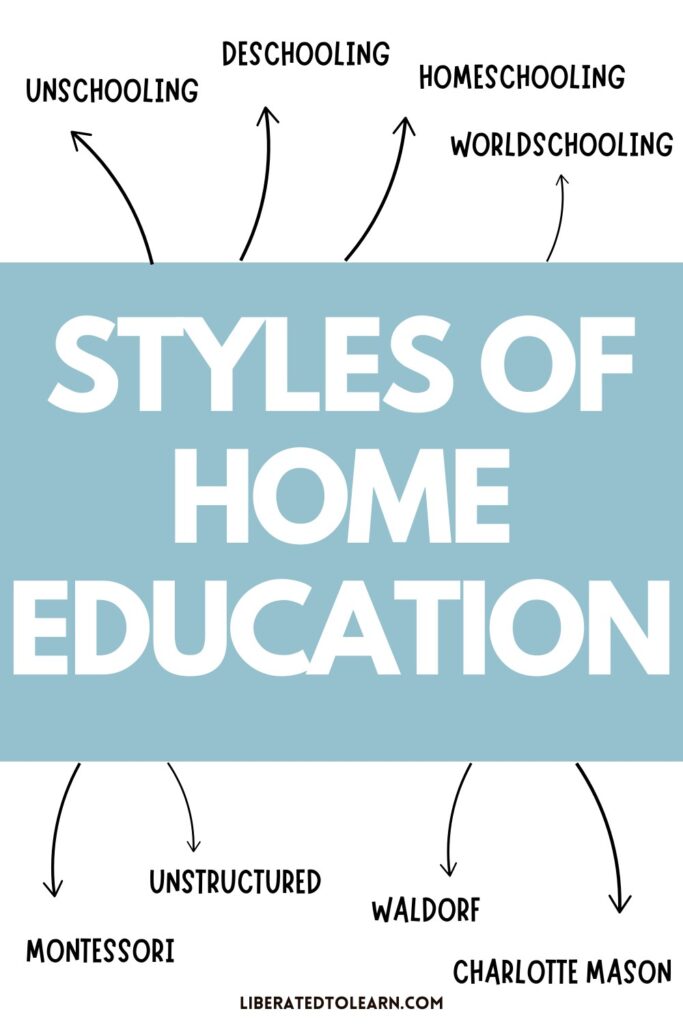
How to Choose the Right Style of Home Education
Choosing the right style of home education for your family can be daunting. Many of us are hopeful of choosing a style which will be perfect from the outset, but this isn’t always the case. If you’re lucky, you’ll find the right one straight away, but sometimes it takes a bit of trial and error to discover a learning style which truly suits your child and their needs.
Something worth remembering is that as children grow and their interests change, their learning style will likely change too. What once worked for them might not work anymore, and that’s no bad thing. It’s not uncommon for children to try out a number of different learning styles throughout their home education journey.
Now, let’s assume you’re picking a style of home education for the first time. How do you know which one to choose? Well, these tips might help you to decide.
Observe how your child learns best
Before choosing a style of home education, the first thing to figure out is how your child learns best. No two people are the same and we all have certain preferences or methods which work better for us.
If your child is a visual learner and enjoys hands-on activities, the Montessori or Charlotte Mason might work for them.
If you think they’re more of an auditory learner and thrive with discussions and listening, either Charlotte Mason or homeschooling could benefit them.
Or if your child is a kinesthetic learner who thrives on activity, either unschooling, roadschooling or worldschooling could be great choices.
Experiment with different styles
If you’re really not sure which style would be the best for your child, simply experiment. There’s no harm in a bit of trial and error. Start with the one which most suits your child’s character and needs. If they struggle sitting and doing worksheets, then homeschooling probably isn’t the best option for them.
A good idea would be to get your child’s input on which learning style they’d like to try. And remember, it doesn’t matter if it ends up not working—you can try a different style until you find the right one, or mix and match various elements from different styles. The great thing about home education is that it’s entirely about the individual and can be personalised however you like.
Consider your family’s lifestyle
When choosing the right style of home education, it’s wise to make sure it aligns with your family’s lifestyle. There’s not much point choosing a learning style if your children won’t get the most out of it and it doesn’t work for your lifestyle.
If you’re a family that loves to travel and you can be flexible with jobs or work from home, then roadschooling or worldschooling is something to consider. If you love structure and routine, then homeschooling might suit your family best. Or, if you simply go with the flow and take each day as it comes, making the most out of every learning opportunity, then unschooling could be a great option.
Define your educational goals
An important thing to do when deciding on a style of home education is to actually define your educational goals. What do you want your children to gain from home education? What do they want to achieve? Is it to excel academically? To master specific talents or skills? Or to gain life skills and world experiences?
Once you’ve defined your educational goals, you’ll have a better idea of the learning style (or styles) that will work for your family.
Be prepared to adapt as you go
The method of learning that you choose to home educate doesn’t have to be set in stone. As mentioned, children change—which means their learning styles will change too, and that’s okay. Be prepared to adapt when you need to and don’t be afraid to try something new.
Note: If you have multiple children, it’s completely okay for them to follow different learning styles as long as it works for your family. Tailor to each individual and do what works best.
Home Education Style Quiz
If you need an extra bit of help on deciding which style of home education to choose, take this fun home education style quiz!
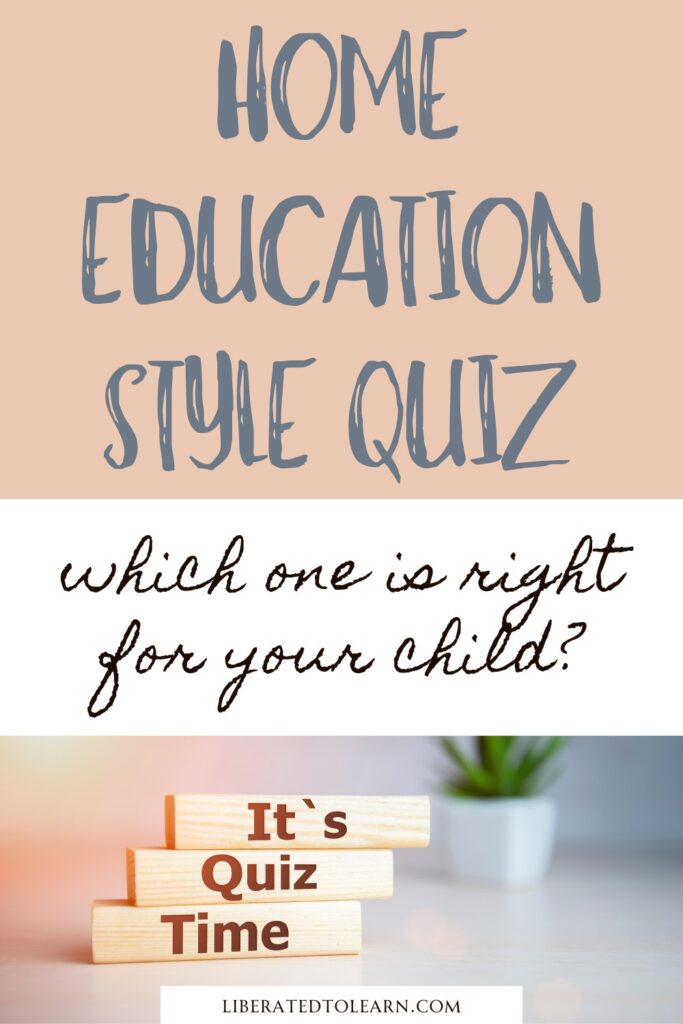
1. What is your primary goal for your child’s education?
- A) Focusing on academics through structure.
- B) Fostering creativity, curiosity, and a love of learning.
- C) Helping my child unlearn traditional school norms and rediscover their natural interests.
- D) Encouraging self-directed, hands-on exploration and independence.
- E) Cultivating a broad education with emphasis on literature, art, and nature.
- F) Letting my child’s interests fully guide their learning.
- G) Incorporating travel and global experiences into their education.
- H) Mixing and matching methods to suit my child’s unique needs.
- I) Prioritising family time and flexibility, often while on the road.
- J) Focusing on imaginative play and holistic development.
2. What type of daily structure do you envision?
- A) A well-defined schedule with clear goals and timelines.
- B) A flexible day with some suggested activities but room for improvisation.
- C) Minimal structure—I want my child to dictate their day.
- D) Hands-on activities with some structured choices.
- E) A rhythm focused on literature, nature walks, and narration.
- F) Completely child-led, without imposed schedules or curricula.
- G) Activities that incorporate experiences outside the home, like museums and cultural sites.
- H) A blend of structured lessons and spontaneous activities.
- I) An adaptable schedule that changes based on travel or family needs.
- J) A nurturing flow that includes creative arts, stories, and outdoor time.
3. How does your child learn best?
- A) Through structured lessons and clear instructions.
- B) By blending hands-on activities with guided exploration.
- C) Through self-directed discovery and minimal intervention.
- D) By engaging in hands-on, practical tasks.
- E) By experiencing stories, art, and the natural world.
- F) Through completely interest-driven exploration.
- G) By immersing in new cultures and real-world experiences.
- H) By using a mix of methods tailored to the moment.
- I) Through experiential learning during travel and family activities.
- J) Through imaginative play and creative expression.
4. What type of learning environment do you envision?
- A) A quiet, structured space with minimal distractions.
- B) A flexible environment with opportunities for both focus and creativity.
- C) An open, unstructured environment that evolves naturally.
- D) A hands-on space with access to tools and materials.
- E) A cosy, inspiring setting filled with books and natural elements.
- F) A freeform space designed entirely around the child’s interests.
- G) A dynamic, ever-changing environment driven by travel and exploration.
- H) A versatile space that adapts to various learning styles and activities.
- I) A mobile environment that works wherever we are.
- J) A nurturing, art-filled environment focused on holistic growth.
5. How do you feel about using a pre-planned curriculum?
- A) I prefer to use established curricula for core subjects.
- B) I’m open to curricula but prefer to adapt it for creativity.
- C) I don’t think a curriculum is necessary.
- D) I value resources that encourage hands-on learning and independence.
- E) I like curricula centered around literature and classic works.
- F) I avoid pre-planned curricula in favor of following my child’s interests.
- G) I would incorporate learning experiences from real-world environments.
- H) I’ll pick and choose elements from different curricula to create a unique plan.
- I) I need something highly portable and flexible.
- J) I’m drawn to resources that emphasise imagination and art.
6. How do you define success in education?
- A) Mastery of traditional academic subjects.
- B) Cultivating a lifelong passion for learning.
- C) Seeing my child’s natural interests blossom.
- D) Watching my child learn through doing.
- E) Building a well-rounded person with a love for nature and the arts.
- F) Supporting my child in pursuing their passions on their own terms.
- G) Raising a globally aware and culturally enriched individual.
- H) Helping my child thrive with a customised approach.
- I) Building family bonds and life skills through shared experiences.
- J) Nurturing creativity, imagination, and holistic growth.
7. What role does travel play in your ideal education approach?
- A) Travel is occasional and supplements traditional learning.
- B) Travel is a nice bonus but not essential.
- C) Travel is an organic part of life and learning, without formal lessons.
- D) Travel provides opportunities for hands-on and cultural exploration.
- E) Travel enriches our love for art, literature, and the natural world.
- F) Travel is driven by my child’s interests and curiosity.
- G) Travel is central—the world is our classroom.
- H) Travel offers opportunities to blend various educational methods.
- I) Travel is key to our lifestyle and flexibility.
- J) Travel inspires creativity, storytelling, and imagination.
8. How do you approach socialisation for your child?
- A) Organised activities and structured group learning.
- B) A mix of planned activities and spontaneous interactions.
- C) Socialisation happens naturally in daily life.
- D) Through collaborative, hands-on group projects.
- E) Small, intentional groups focused on shared interests like nature or books.
- F) Socialisation is child-led, based on their comfort and interest.
- G) Socialisation through global travel and cultural exchanges.
- H) Combining group activities, travel, and community events.
- I) Socialisation happens as we travel and meet new people.
- J) Through storytelling, shared play, and creative projects with others.
9. How do you prioritise the arts in your child’s education?
- A) Arts are secondary to core academics.
- B) Arts are an important complement to academic subjects.
- C) Arts are a natural extension of my child’s interests.
- D) Arts are part of hands-on exploration and creativity.
- E) Arts are a central component of a well-rounded education.
- F) Arts are integrated based on my child’s preferences.
- G) Arts are inspired by cultural experiences and travel.
- H) Arts are one piece of a multifaceted education approach.
- I) Arts are woven into our daily experiences, especially on the road.
- J) Arts are a primary focus for creativity and holistic growth.
10. How involved do you want to be in your child’s day-to-day learning?
- A) I want to be highly involved, guiding each lesson.
- B) I like to provide guidance but also allow for independence.
- C) I prefer to step back and let my child take the lead.
- D) I enjoy collaborating with my child on projects and activities.
- E) I see myself as a facilitator for rich, meaningful experiences.
- F) My involvement depends on my child’s needs and preferences.
- G) I want to be a travel companion and guide, learning alongside them.
- H) I enjoy balancing direct teaching with stepping back.
- I) I focus on being present while adapting to travel and family needs.
- J) I prioritise creating a nurturing and imaginative environment.
11. What is your approach to technology when home educating?
- A) Technology is a tool to enhance structured learning.
- B) Technology is useful but should be balanced with hands-on activities.
- C) I prefer minimal use of technology in learning.
- D) Technology supports interactive and creative exploration.
- E) Technology complements literature, art, and natural studies sparingly.
- F) Technology is used as my child finds it helpful for their interests.
- G) Technology helps us connect globally and access diverse resources.
- H) Technology is a component of our mixed-method approach.
- I) Technology must be portable and flexible for on-the-go learning.
- J) Technology is limited, with a focus on imaginative and sensory experiences.
12. Which scenario would your child prefer?
- A) A quiet study space with textbooks and planned lessons.
- B) A creative area with a mix of art supplies and science experiments.
- C) The freedom to choose how to spend their day, from reading to exploring.
- D) A hands-on activity station with building materials and science kits.
- E) A cosy setting for storytelling, painting, and nature-inspired crafts.
- F) An open-ended environment where they pursue their current interests.
- G) Exploring a museum or cultural landmark in a new city.
- H) A blend of educational games, outdoor play, and craft projects.
- I) Learning on the go while visiting new places and meeting people.
- J) A warm, imaginative space with toys and materials for creative play.
13. How important is routine in your daily life?
- A) Very important—we thrive on consistency and schedules.
- B) Somewhat important—it helps to have a flexible routine.
- C) Not important—we prefer to go with the flow.
- D) Important for anchoring hands-on and collaborative activities.
- E) Important but naturally integrated into a gentle rhythm.
- F) Not important—we adapt as my child’s interests evolve.
- G) Routine is secondary to travel and exploration opportunities.
- H) A balance of routine and spontaneity works best.
- I) Routine adapts to our travel and family dynamics.
- J) Routine focuses on nurturing and creative rhythms.
14. What does your child enjoy most about learning?
- A) Mastering skills and concepts systematically.
- B) Discovering new things through creativity and experimentation.
- C) Following their own curiosity wherever it leads.
- D) Working with their hands to create and explore.
- E) Listening to stories, exploring nature, and making art.
- F) Having the freedom to learn at their own pace and direction.
- G) Experiencing new cultures, places, and ideas.
- H) The variety and mix of activities that keep things engaging.
- I) Learning through experiences as we travel together.
- J) Imagining, creating, and storytelling in a holistic way.
Results
Now it’s time to count your answers and match them to an education style (or styles):
- Mostly A: Homeschooling – You value structure, academics, and a well-defined curriculum.
- Mostly B: Eclectic Homeschooling – You blend structure with creativity and flexibility.
- Mostly C: Deschooling – You’re focused on breaking free from traditional school norms to rediscover learning naturally.
- Mostly D: Montessori – You value hands-on, child-centered learning with a focus on independence.
- Mostly E: Charlotte Mason – You prioritise a rich, nature and literature-based education.
- Mostly F: Unschooling – You fully embrace child-led, interest-driven education without imposed structures.
- Mostly G: Worldschooling – You see the world as your child’s classroom and prioritise global experiences.
- Mostly H: Eclectic Homeschooling – You enjoy pulling from various styles to create a personalised approach.
- Mostly I: Roadschooling – You prioritise flexibility and learning while travelling.
- Mostly J: Waldorf – You focus on imagination, creativity, and holistic growth.
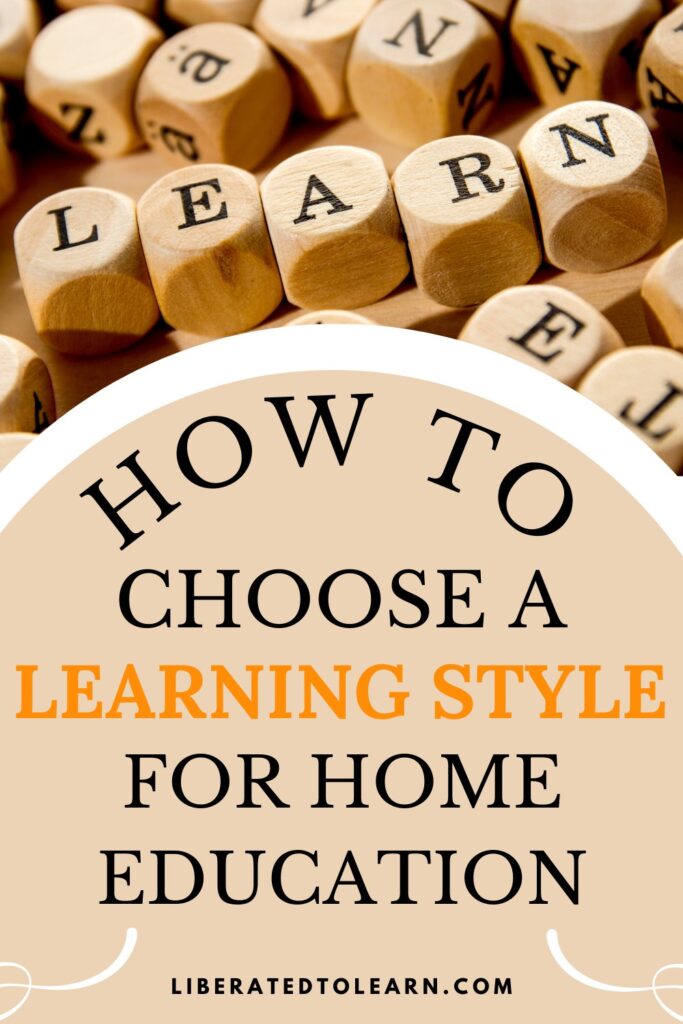
m@liberated
Want more from Liberated to Learn?
Subscribe to stay updated about new posts, resources and giveaways!




